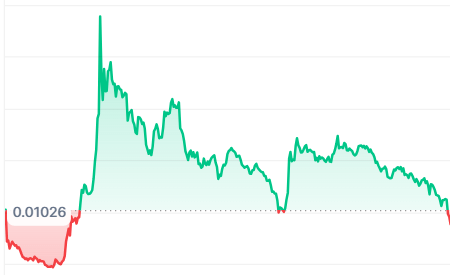In the crypto world, airdrops have sparked a modern-day gold rush.
Everyone loves getting something for free, even the wealthy. However, the universal principle that what goes around comes around holds true.
Airdrop farmers are constantly on the lookout for the next big project to ‘farm’, hoping to break free from financial constraints. But with the total value of airdrops surpassing $35 billion in November 2024, one might wonder: where does this value come from, and is it truly free?
The allure of airdrops is undeniable, but what do hunters pay in return?
The answer lies in behavioral economics, specifically the Endowment Effect.
This psychological phenomenon occurs when individuals ascribe more value to items they own. Once crypto airdrop participants feel ownership over their tokens, they’re less inclined to sell immediately, often becoming even more invested in the project.
Initially, airdrops were a niche activity, appealing mostly to tech-savvy individuals. Participants would spend time (sometimes significant amounts) to perform tasks like bug hunting or boosting project stats, such as total number of accounts, volume of trades, time spent on the platform, number of specific actions completed, etc.
These tasks, inherently technical, limited engagement to a knowledgeable few, creating a balance between those selling for quick profits and those holding for potential future gains. Typically, those who sold early reaped the most benefits.
The landscape shifted with the advent of gamified Telegram mini-apps in 2024, making GameFi the trend of the year.
Notcoin set a precedent, increasing in value 7X post-launch.

Early sellers often regretted not waiting longer, while those who held onto their tokens until peak value enjoyed substantial profits, sparking envy among observers.
However, due to the Endowment Effect, even those who sold for profit often reinvested in the project. The gamification not only fostered a sense of ownership but also built community, encouraging users to reinvest to amplify their holdings in anticipation of the next surge. This is a classic example of how the Endowment Effect can lead to increased investment in what one already possesses.
The success of Notcoin had a domino effect, spotlighting other GameFi projects on Telegram’s TON platform, onboarding millions. Projects like Blum and Animoca’s Gamee surpassed a fifty million monthly users.

While this influx diluted the value per airdrop, the gamified system enhanced user loyalty. Despite less lucrative airdrops, many users held onto their tokens, even adding to their stakes in speculation of future market rises.
What do users exchange for these airdrops?
- Time
- In-game resources
- External resources
- Their ability to persuade others through referral systems
Meanwhile, projects gain:
- A surge in overall and active user numbers
- Monetization through in-game assets and user donations to boost airdrop quantities
- A dramatic increase in social media engagement and followings
- Investment from both users and traditional investors, captivated by the impressive metrics
Remarkably, many of these GameFi successes didn’t initially have a tangible product or structured offerings, yet they thrived through clever gamification.
The Endowment Effect manifests in three key ways:
- Perceived Value: Ownership increases perceived value, making users more committed.
- Emotional Attachment: Users become attached to items they own, encouraging further engagement or investment.
- Freemium Models: Free offerings lead to customization or upgrades, fostering a sense of ownership that often transitions to purchases of premium features.
This model’s success on Telegram and TON’s infrastructure has been unprecedented, potentially outstripping traditional marketing efforts costing hundreds of thousands. This isn’t just about crypto; it’s a blueprint for Web2 and Web3 businesses, potentially shifting marketing paradigms towards platforms like Telegram for growth and promotion.
Whether these pioneering GameFi ventures will provide lasting value or vanish remains to be seen.
As an observer in this evolving space, follow me for more insights and criteria to evaluate whether a GameFi project is worth your time and resources.